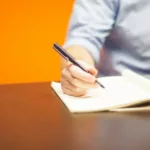When we learn something new, whether musical or not, there are different ways of focusing on what we understand. There are students who are more auditory than others, others more visual, others who are tactile and others who need to understand everything analytically. Therefore, if you want to know how to learn music you have to have some of the qualities mentioned.
Auditory or sound learning:
Auditory learning is based on listening and speaking when we learn. In many cases, the auditory student has problems learning in writing, that is why some people who read a score / tablature are not clear.
These students generally prefer to have an idea of the song before learning it and that is why they usually ask the teacher to play it before.
This has happened to me a lot and it continues to happen to me. I even have students who only look at me while I make chord changes. They learn by listening and watching what I do, that is kinesthetic and auditory.
It is difficult for these students to ask them to look at the score while they play; they prefer to observe what is written. They also prefer to look at the mast and listen to themselves striving to remember what they have to touch.
Auditory learners, if they want to know how to learn music, will use their good listener skills to organize the information they are receiving and thus process it better. That’s why they also close their eyes or tries to memorize rather than read.
The visual learning:
If you are visual, you will think of a score and you will see all the notes placed one above the other in your mind. You will see the figure of the chords in your mind and you will have a clear idea of what that chord looks like. You will also be able to read scores; on the contrary, you will prefer to play a progression of chords that is written.
In this spectrum I have also met musicians and students who must have everything written to perfection and then look at it.
These students or musician have usually gone to the conservatory and are used to having a role that tells them what to play. Do not you dare to give an audio to that person so that he learns the chords, gives him the written chords and will do his job well?
Kinesthetic learning:
How to learn music from a kinesthetic point of view is another important aspect. If we talk about music, this consists in feeling the instrument, in tactfully remembering what it is that you have played. Because when you imagine yourself learning something you remember it in your fingers, as in the case of the re chord, you will remember it in fret 2, you will feel your fingers treading on the frets, noticing the strings in your fingers, you will notice the width of the neck of your guitar and so on.
In kinesthetic learning has much to do coordination and mechanics as well as repetition when it comes to learn for example scales, chords or arpeggios. That is why it is so important to repeat a lot when we practice and the greatest danger of this is that we automate ourselves. That is why we have to change the approach and the way we practice something that already comes out of us so as not to get bored and not get stuck as musicians. For example, instead of touching a scale from top to bottom, touching it with patterns.
That said, the instrument, like any sport (tennis, basketball or something like juggling for example) requires repetition so that the body internalizes mechanical movements.
With repetition what we achieve, in all areas where a skill is required, is to do something effortlessly in an accurate and automatic way. A kinesthetic student has good rhythm development, learns directly and likes to learn with things that stimulate him, for example, playing with more people. This learning is very important when we play an instrument. Therefore, if you want to know how to learn music correctly, have this type of learning present at all times to use it to your advantage.
The theoretical learning:
The last important pillar if we want to know how to learn music is theoretical learning. This is not as necessary as the previous 3, there are great musicians who have never needed to understand what they play to make good music. This learning in isolation does not help us when we play live. In the interview we did Guthrie Govan he said this about:
For me, the theory is working in the back of my head. Once you know how the theory sounds, you do not have to be conscious while you’re playing.
That is, we do not think about it when we play. In cases that do work, for example, when we analyze a score to understand its style or the chords it contains.
A theoretical and analytical apprentice tends to want to understand everything. These students are not worth knowing that the note is in the second space of the staff. No, they have to know why this is so that they can continue playing.
This is not good either because it slows learning a lot. In my case, I prefer an inductive rather than a deductive apprenticeship, this means knowing how to touch something first and then understand it.
How to learn real music:
That said, a balance between auditory, visual, kinesthetic and theoretical learning is ideal to be a good musician. That is to say, if you are going to touch something new, begin to touch it slowly, feeling the movements that your fingers are doing (kinesthesia). Look at your fingers if you see that something sounds bad (visual), to verify that what you are playing is the right thing by looking at the (theoretical) score. Play a beat, close your eyes and listen to how it sounds (auditory).
All this mental process does not happen in order; they are different mechanisms that we use as we advance in the score consciously and effectively to then internalize our movements and have the new song in our hands.
There are some great articles here at best blog for drummers.








